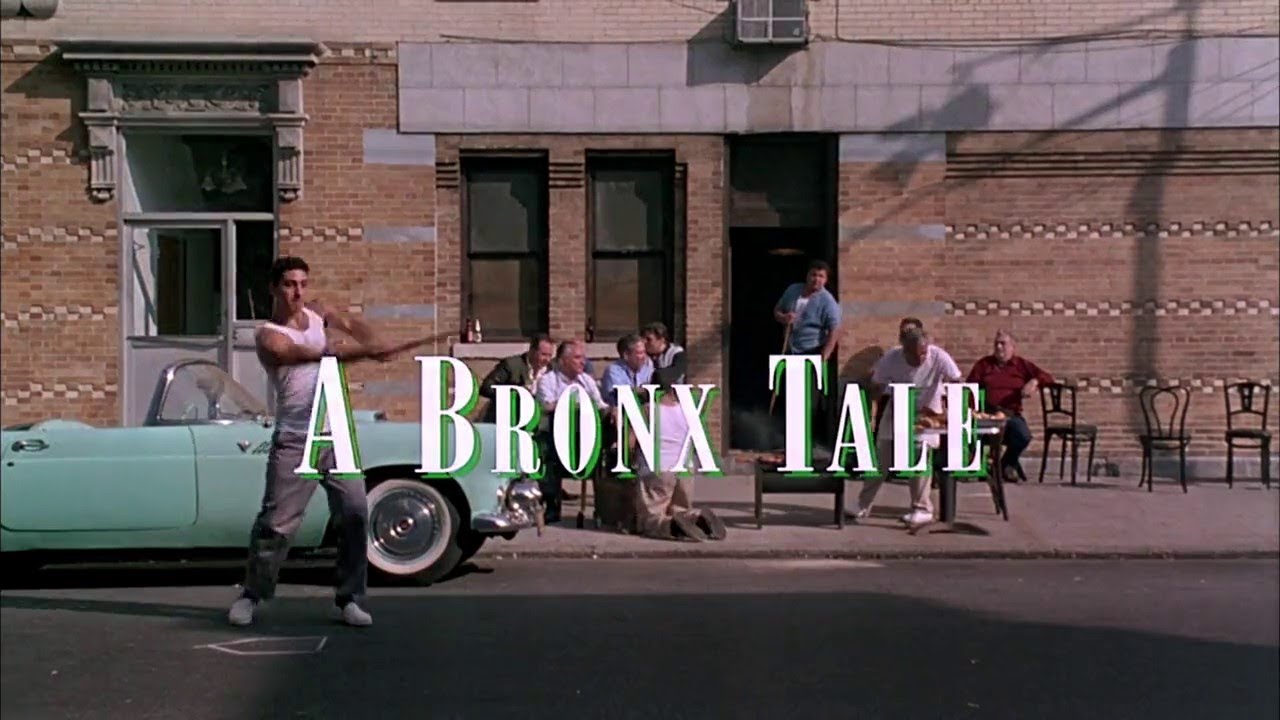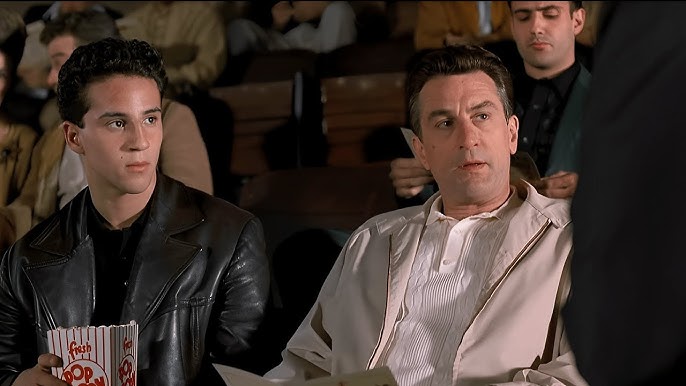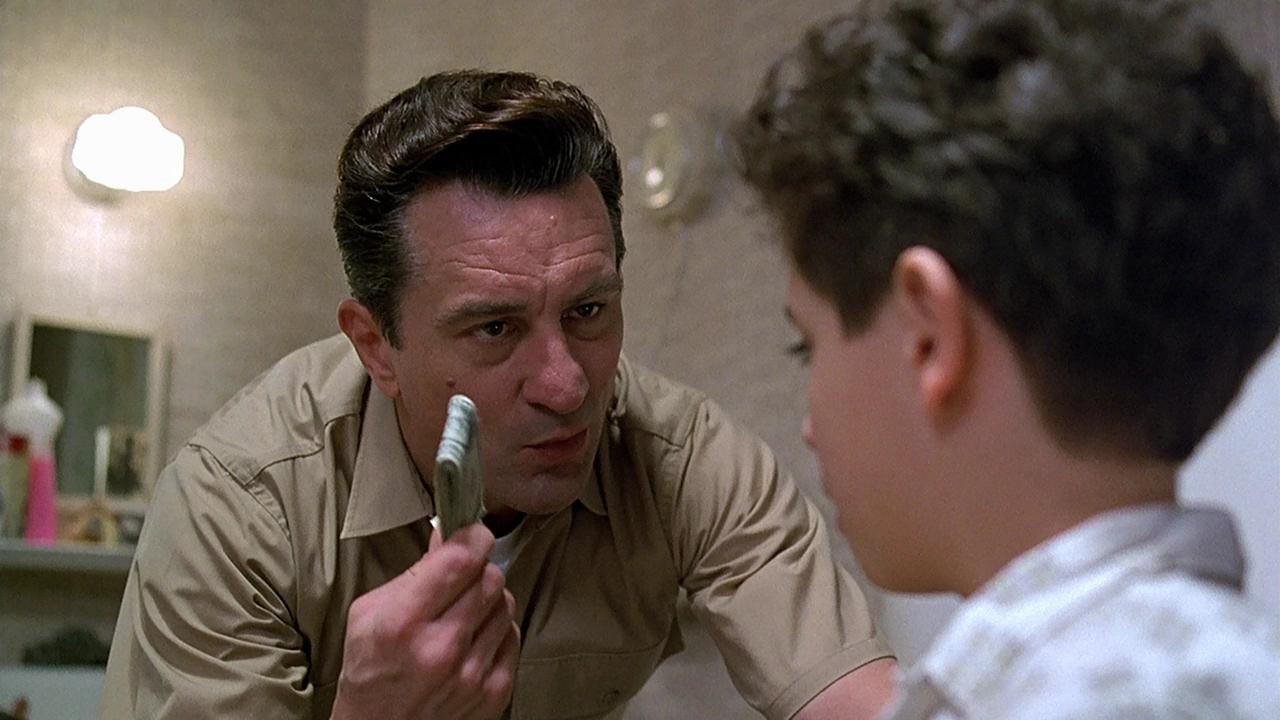A Bronx Tale (1993)

A Bronx Tale (1993) – A Timeless Coming-of-Age Crime Drama
Introduction
A Bronx Tale (1993) is a gripping coming-of-age crime drama that seamlessly blends themes of loyalty, love, and morality. Directed by Robert De Niro in his directorial debut, the film is based on Chazz Palminteri’s autobiographical one-man play. Palminteri also wrote the screenplay and stars as the charismatic yet dangerous gangster, Sonny.
Set in the 1960s in the Bronx, New York, the film tells the story of a young boy, Calogero, who finds himself caught between two father figures: his hardworking, honest father, Lorenzo (Robert De Niro), and the local mob boss, Sonny (Chazz Palminteri). As Calogero navigates the challenges of growing up, he is faced with difficult choices that test his values, friendships, and sense of identity.
A Bronx Tale is more than just a mob movie—it’s a heartfelt exploration of the struggles of adolescence, the power of influence, and the meaning of true strength. In this detailed review, we’ll examine the film’s plot, themes, character development, performances, cinematography, cultural impact, and why it remains one of the most underrated crime dramas of the 1990s.
Plot Summary: A Boy Torn Between Two Worlds
The film opens in the 1960s, where nine-year-old Calogero Anello (Francis Capra as young Calogero, Lillo Brancato as teenage Calogero) lives in an Italian-American neighborhood in the Bronx. His father, Lorenzo (Robert De Niro), is a hardworking bus driver who values honesty and integrity. One day, Calogero witnesses a shooting outside his home, committed by the feared neighborhood gangster, Sonny (Chazz Palminteri). When questioned by the police, Calogero refuses to identify Sonny as the shooter, earning the mobster’s respect.
1. Sonny’s Influence and Calogero’s Double Life
Over the years, Sonny takes Calogero under his wing, exposing him to the glamorous yet dangerous world of organized crime. He teaches him about power, respect, and survival, telling him that “fear lasts longer than love.” While Lorenzo disapproves of Sonny’s influence, Calogero becomes enamored with the perks of being associated with the mob.
2. First Love and Racial Tensions
As a teenager, Calogero falls for Jane Williams (Taral Hicks), a Black girl from a neighboring community. Their budding romance is met with hostility from both sides, as racial tensions in the Bronx run high. This subplot adds another layer to the film, as Calogero learns that love and friendship should transcend prejudice.
3. The Climactic Tragedy
Despite Sonny’s mentorship, Calogero avoids getting too deeply involved in crime. However, his friends, fueled by racism and reckless behavior, plan a violent attack on Jane’s community. Sonny warns him to stay away from them, a decision that ultimately saves Calogero’s life when his friends are killed in a firebombing incident.
Shortly after, Sonny is assassinated in his bar, an act of revenge from another mobster. Devastated, Calogero realizes that Sonny, despite his flaws, truly cared for him. The film ends with Lorenzo and Calogero paying their respects at Sonny’s funeral, as Calogero acknowledges that both his father and Sonny shaped him into the man he is becoming.
Themes: A Thought-Provoking Look at Morality and Identity
1. The Battle Between Good and Evil
Calogero is caught between two father figures—Lorenzo, who represents honesty and discipline, and Sonny, who symbolizes power and street wisdom. The film explores the internal struggle of choosing between what is right and what is easy.
2. Fear vs. Love
One of Sonny’s most memorable lessons is: “It’s better to be feared than loved if you cannot be both.” This philosophy drives his criminal empire, yet Calogero learns that true respect and loyalty cannot be built on fear alone.
3. Racism and Social Divides
The racial divide in A Bronx Tale is a critical part of the story. Both Italian and Black communities are portrayed as having their prejudices, yet Calogero and Jane’s relationship highlights the possibility of change.
4. The Choices That Define Us
Throughout the film, Calogero is presented with choices—stay with his friends or walk away, engage in crime or follow his father’s guidance. Each decision shapes his future, emphasizing the idea that one’s path is determined by personal choices, not fate.
Character Development: Strong Performances That Elevate the Film
1. Calogero Anello (Lillo Brancato/Francis Capra)
Calogero’s journey from an impressionable boy to a young man struggling with identity is beautifully portrayed. Lillo Brancato captures the character’s internal conflicts, showing both admiration for Sonny and love for his father.
2. Sonny (Chazz Palminteri)
Chazz Palminteri’s performance as Sonny is legendary. He is both ruthless and charismatic, embodying the complexity of a gangster with his own moral code. His mentorship of Calogero is not about leading him into crime but rather guiding him toward survival.
3. Lorenzo Anello (Robert De Niro)
Robert De Niro delivers a powerful performance as the strict yet loving father. Lorenzo’s quiet strength and unwavering integrity contrast sharply with Sonny’s street-smart wisdom. His message that “the saddest thing in life is wasted talent” becomes a guiding principle for Calogero.
4. Jane Williams (Taral Hicks)
Jane represents change and hope. Despite the prejudices of those around her, she believes in Calogero’s kindness. Their relationship, while short-lived, is a crucial part of his personal growth.
Cinematography and Direction: A Beautifully Crafted Film
Robert De Niro’s directorial debut is nothing short of outstanding.
1. Authentic Bronx Setting
The film beautifully captures the atmosphere of 1960s New York, with period-accurate details in cars, fashion, and music. The neighborhood feels alive, giving the story an authentic backdrop.
2. The Use of Light and Shadow
The cinematography enhances the film’s tone—Sonny’s bar, often dimly lit, symbolizes the darkness of the criminal underworld, while Lorenzo’s home is filled with warm lighting, representing stability and love.
3. Slow-Motion and Symbolism
The climactic firebombing scene is shot in dramatic slow motion, emphasizing the tragic consequences of blind hatred. The use of slow-motion also highlights key moments, such as Sonny’s assassination, making them more impactful.
Cultural Impact and Legacy
1. A Unique Take on the Mob Genre
Unlike films like Goodfellas or The Godfather, A Bronx Tale focuses on the moral dilemmas of a young boy rather than glorifying the mafia lifestyle. It offers a different perspective, making it stand out in the crime genre.
2. Influence on Future Films and TV Shows
The film’s themes of mentorship and moral struggles have influenced many works, including The Sopranos. The dynamic between Tony Soprano and Christopher Moltisanti shares similarities with Sonny and Calogero.
3. Broadway Adaptation
In 2016, A Bronx Tale was adapted into a Broadway musical, further cementing its legacy as a timeless story.
Box Office and Critical Reception
- Box Office: The film earned $17.3 million at the box office against a $21 million budget, making it a moderate financial success.
- Rotten Tomatoes Score: 97% (Critics), 93% (Audience)
- Critical Praise: The film was praised for its performances, storytelling, and emotional depth, with Roger Ebert giving it four out of four stars.

Why A Bronx Tale Remains a Classic
✔ Powerful storytelling – A deep, character-driven narrative that resonates across generations.
✔ Strong performances – De Niro, Palminteri, and Brancato bring the characters to life.
✔ Timeless themes – Lessons about morality, love, and identity that remain relevant today.
✔ Authentic atmosphere – A true representation of 1960s Bronx culture.
Conclusion: A Must-Watch Crime Drama with Heart
A Bronx Tale (1993) is more than just a mob movie—it’s a profound story about choices, loyalty, and growing up. With exceptional performances, heartfelt themes, and masterful direction by Robert De Niro, it remains one of the greatest coming-of-age films ever made.











